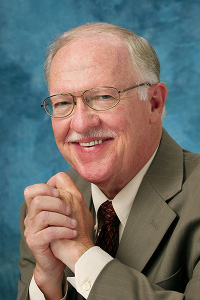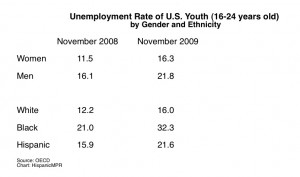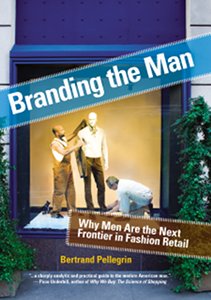Posted by Elena del Valle on December 11, 2009

In Four Generations of Norteños New Research from the Cradle of Mexican Migration (Center for Comparative Immigration Studies, $24.50) edited by Wayne A. Cornelius, David Fitzgerald and Scott Borger twenty nine authors share insights on the migration of people over decades between central Mexico and the United States. Their findings are based on many years of data gathered from fieldwork and thousands of recent interviews. The authors examine complex issues such as smuggling people across the Mexico United States border, border enforcement and its possible impact on immigration decisions, and migration’s effect on families, health and the economy of the region.
The 250-page paperback book is divided into eight chapters: The Dynamics of Migration: Who Migrates? Who Stays? Who Settles Abroad?; Is U.S. Border Enforcement Working?; Coyotaje: The Structure and Functioning of the People-Smuggling Industry; Jumping the Legal Hurdles: Getting Green Cards, Visas and U.S. Citizenship; Development in a Remittance Economy: What Options Are Viable?; Outsiders In Their Own Hometown? The Process of Dissimilation; Families in Transition: Migration and Gender Dynamics in Sending and Receiving Communities; and The Migrant Health Paradox Revisited.

Wayne A. Cornelius, director emeritus, Center for Comparative Immigration Studies (CCIS)
Cornelius is director emeritus, Center for Comparative Immigration Studies (CCIS), University of California-San Diego as well as Distinguished Professor of Political Science and Theodore E. Gildred Chair in U.S.-Mexican Relations at that university. Fitzgerald, associated director, CCIS is author of A Nation of Emigrants: How Mexico Manages Its Migration. Borger is a Ph.D. candidate in economics at the University of California, San Diego.

Click here to buy Four Generations of Nortenos
Comments:
Filed Under: Books
Posted by Elena del Valle on December 9, 2009

Angel Gurría, secretary-general, OECD
Photo: Organization for Economic Co-operation and Development (OECD)
In spite of the recent talk of job related improvements, millions of Americans have suffered the ill effects of unemployment. Teenagers have been hit especially hard. For example, in November 2009, more than 25 percent of 16 to 19 year-old Americans were unemployed compared to ten percent for all workers. This is said to be the highest rate of teenage unemployment in the U.S. since World War II.
According to Jobs for Youth: United States, a 170-page report released this month by the Organization for Economic Co-operation and Development (OECD), in the year to November 2009, the youth unemployment rate in the United States rose by 8 percentage points to 19 percent representing an additional 1.6 million young people out of work.
“The short-term priority must be to help the young people most at risk to avoid the long-term scarring of a generation of young Americans,” said Angel Gurría, secretary-general, OECD in a news release. “Business must play its part in creating jobs but the government has to act quickly to extend financial support to more young people and increase funding for re-employment programmes. Longer-term, investing more in education to give young people the skills they need to succeed is essential.”

Unemployment in U.S. Youth 2008-2009 – click to enlarge
As recently as 2007, the youth employment rate was 53 percent. While not ideal, especially when compared with 60 percent in 2000; the youth unemployment rate, at 11 percent, was about 1 percentage point higher than its 2000 level. The report summary predicts African-American youth, youth with no qualifications and young women are particularly to face increasing challenges.
Jobs for Youth: United States is the latest in a series of OECD reports on youth employment policies that covers 14 countries. OECD provides a forum for member governments to compare policy experiences, “seek answers to common problems, identify good practice and coordinate domestic and international policies.”
Target Latinos effectively by understanding how they shop
“Hispanic Holiday Shopping Patterns” audio recording

Manuel Delgado, CEO Agua Marketing, gives a presentation and participates in an extended Q&A discussion about
- Hispanic shopping patterns national survey
- Why Latino consumers may be more desirable than general market shoppers
- Hispanics holiday shopping patterns and behaviors
Click here for information on “Hispanic Holiday Shopping Patterns” audio recording
Posted by Elena del Valle on December 7, 2009

Dr. Lepora with Dr. Krueger in surgery in Liberia
Photo and videos: Red Floor Pictures Production
In mid 2005, Mark Hopkins began production of a film about Medecins Sans Frontiers (MSF), the well known international emergency assistance organization spearheaded by volunteer physicians and health care providers, and its work, mostly in Africa. It required much convincing and gaining of trust on his part to win Doctors Without Borders, as it is known in English, over to the idea of a no holds barred film of their volunteers in the field. Hopkins describes the film as exploring the limits of idealism. Scroll down to watch two video clips of the documentary.
“I hope they get a sense of what life in the field is like for MSF doctors. Beyond that, hopefully an unburdened sense of interest in the humanitarian arena: an understanding that these guys are not heroes, they’re not saving the world, and that the work is engaging and rewarding in its own right – it doesn’t need ideas of big accomplishment to justify itself – the patient in front of you is more than enough. We didn’t make the film to deliver a message, the idea was more to immerse people in the MSF environment,” said Hopkins about the purpose of the project and what he hopes the audience gains from viewing the film.
Nearly four years after filming of Living in Emergency began the film is ready to open in theaters nationwide as a Red Floor Pictures release. Ten people worked on the project made possible with a modest $1.7 million budget provided by private individuals who the promoters declined to identify.
“The reason for the time delay is that documentaries take a long time to make. The crew began filming in mid-2005 and filmed on and off for 12 months. The editing ran for 18 months. The film was finished in 2008, premiered at the Venice Film Festival, spent the last 12 months playing at festivals, and is now building up to its widespread release,” a film spokesperson explained when asked about the delay between the film and release dates.
From July to September 2005, the crew filmed in Beni and Kayna, two towns in the Democratic Republic of Congo (DRC), especially the MSF hospital and its environs. Next, they traveled to the Liberian capital of Monrovia to film at MSF’s Mamba Point Hospital, where MSF was providing emergency care following the Liberian Civil War; and to the remote northern towns of Foya and Kolohun.
In October 2005, the crew traveled to Kashmir, Pakistan to film the MSF emergency response to the 7.6 magnitude earthquake. In 2006, they returned to Africa, to revisit Mamba Point Hospital, and traveled to Malawi to see the MSF AIDS program. Additional film locations included Paris, France, Montreal, Canada, Niger, Kenya, and Tennessee, United States. The production was organized to cover the various facets of the MSF organization such as the administrative base, conflict and post-conflict missions, and response to natural disasters.
Hopkins, born in Puerto Rico and raised in Italy and Kenya, worked for producer Scott Rudin for several years before producing his first solo documentary film. He was most recently the producer of Going Upriver: The Long War of John Kerry. Living in Emergency is his directorial debut. Bruno Coulais, composer, and Bob Eisenhardt, senior editor, also contributed to the film.
Doctors Without Borders/Médecins Sans Frontières (MSF) is an international medical humanitarian organization created by doctors and journalists in France in 1971 that strives to provide independent, impartial assistance to those most in need. The organization, a recipient of the 1999 Nobel Peace Prize, provides aid in more than 60 countries to people whose survival is threatened by violence, neglect, or catastrophe, primarily due to armed conflict, epidemics, malnutrition, exclusion from health care, or natural disasters.
According to promotional materials, on any one day, more than 27,000 individuals representing dozens of nationalities are providing assistance to people caught in crises around the world. They are doctors, nurses, logistics experts, administrators, epidemiologists, laboratory technicians, mental health professionals, and others who work together in accordance with MSF’s guiding principles of humanitarian action and medical ethics. The majority of these aid workers are from the communities where the crises are occurring; only ten percent of teams are made up of international staff.
Comments:
Filed Under: Video
Posted by Elena del Valle on December 4, 2009

Watercooler: Behind the Scenes and Off the Record book cover
Photos: Ascot Media Group, Inc.
In Watercooler, Behind the Scenes and Off the Record, The Untold Stories from Broadcasters (Authorhouse, $16.98) Elizabeth Sanchez shares untold stories she gathered around the office while speaking with colleagues in newsrooms and broadcast studios. They are personal stories from nine women (including Sanchez) and four men reporters at networks like Fox News and CBS as well as local affiliates of the big networks in several areas of the country.
Sanchez, host of the national PBS TV show A Place of Our Own, dedicated seven chapters to the stories in the 112-page paperback book published this year. The chapter titles are: Mother Nature’s Fury, In the Thick of Things, Putting It into Perspective, Choosing Course, Perks and Punches, Reflections on Death, and Launching Pad.
The new book features stories about what the reporters thought were inspiring and horrific moments covering crime and natural disasters, including war zones, Hurricane Katrina and the Los Angeles riots. Rita Cosby, former Fox News correspondent and MSNBC talk show host, told Sanchez about how she was riding in a media helicopter to survey damage from Hurricane Katrina when the craft was recruited for rescue efforts.
“Our chopper became a crammed aerial ambulance transporting evacuees, some covered in blood from falling debris and broken glass,” said Cosby. “I remember asking a young rescued woman where she was going to go next. She simply responded, ‘Just away from here.’”
Barry Peterson, a CBS News correspondent, tells of his experience covering the war in Sarajevo and trying to catch a flight on “Maybe Airlines,” an unreliable United Nations airlift that sometimes dropped off supplies and picked up hitchhiking journalists and their gear, when there was no sniper fire, bad weather or mechanical problems. His old passport has the stamp of “Maybe Airlines.”
Other story contributors include Stacy Case, a TV host and producer; Juan Fernandez, a reporter for KCBS; Elise Finch, a WCBS-TV meteorologist; Sandra Gonzalez, a reporter with Fox; Kristine Lazar, a television reporter; Drew Levinson, a national correspondent for CBS Newspath; Jennifer Miller, a CBS reporter; Tracey Neale, a primary anchor for 9News; Sarah Schulte, a reporter with ABC; and David Whisenant, a reporter and anchor with WBTV.

Author Elizabeth Sanchez
Before becoming host of the Emmy-nominated PBS TV show Sanchez, winner of several Emmys, worked as a news anchor and reporter in San Diego, Charlotte, and Phoenix. She also has been a national correspondent for CBS NewsPath and covered the death of Michael Jackson, presidential elections, the Space Shuttle Columbia tragedy, the Kobe Bryant and Scott Peterson court cases, and the White House.

Click here to buy
Watercooler
Comments:
Filed Under: Books
Posted by Elena del Valle on December 3, 2009
An article with comments by Elena del Valle, principal LNA World Communications and HispanicMPR editor and host, was recently published in Diversity Matters edited by Annette Merritt Cummings in the Bernard Hodes Group online publication (September/October 2009).
Posted by Elena del Valle on December 2, 2009

When my budget is tight I strive to obtain as much as possible for my money. I examine purchases to make sure they offer the best value for money. In doing so I look closely at new and existing vendors. I’m most likely to patronize those vendors that offer the same value I have received in the past. Vendors that offer additional benefits compared to past purchases and existing options are the most likely to receive my business.
I am in good company thanks to the spreading economic crisis. Many, if not most, consumers face the same decision issues today. According to a recent Mintel (“a global supplier of consumer, product and media intelligence”) survey, a majority of shoppers said they always look at sale items before shopping for non-sale items, especially in department stores (64 percent), at mass merchandisers (53 percent) and at discount apparel stores (53 percent). Four in 10 shoppers said they spend a lot of time looking for clothing sales and shopping around for the lowest price.
That is why I find it puzzling and self defeating to see the increasing number of companies that decrease benefits for the same cost. To illustrate I will tell you about a favorite restaurant my husband and I used to visit regularly. Although the food was nothing to write home about for years we stopped there on weekends for a quick bite and to enjoy the stunning and extraordinary waterside setting the historic restaurant offered.
It was a popular restaurant. Often there was a long wait (an hour or more) for a table, longer for the section we liked. As the economy soured the crowed thinned. Now here’s where it gets interesting. As fewer guests came the restaurant management began cutting back on the quality and quantity of the food. The prices remained the same. The cloth napkins were replaced with paper napkins. The yummy Hawaiian bread and warm cornbread had to be requested instead of being brought automatically as in the past. After a while, the nice bread disappeared completely to be replaced with boring buns. The guacamole was excised from the fish tacos plate. It could be ordered for a supplement of $1. The portion size became smaller than ever and the quality of the food diminished. The prices remained the same.
Eventually, and worst of all, the quality of the food dropped so much I couldn’t eat it. For a while we had struggled with the state of the restaurant but kept on going hoping that the management would realize that taking good care of the loyal customers that remained was the best avenue to surviving difficult times. Instead things continued to worsen. After several more disappointing visits we stopped going altogether.
Last week the Air Transport Association predicted holiday traffic would drop 4 percent and others speculated that the drop in air traffic would be ever greater during what is historically one of the busiest travel weeks of the year. It’s no wonder with high unemployment, a deep recession and airline surcharges for holiday travel. It’s bad enough having to travel through crowded often ill designed, uncomfortable airports; and run through the gauntlet of airport safety checks, removing sweaters, belts, shoes, watches, and even jewelry to pass through; sometimes being wanded or patted down by a stranger; and obliging any instruction an arbitrary security agent provides to get from Point A to Point B on an overcrowded airplane (although there are fewer passengers than in past years the airlines have reduced flights leaving remaining flights overcrowded) when there is so much stress in our lives already.
If they want to improve their bottom line and customer loyalty, should airlines be offering better deals and more incentives; and doing everything they can to make it more pleasant and easier than ever for passengers to travel? Are they doing that already? Is adding luggage fees and holiday surcharges producing the results they desire? Are passengers likely to eagerly book when they return from full flights that results in increasingly less comfortable travel experiences?
It seems counter intuitive to raise prices and lower quality and quantity when everyone is cutting back budgets and looking to maximize value for money. And yet that seems to be what so many companies are doing. From a marketing perspective to draw traffic you offer an irresistible product or service or the perception of it. There are many examples of this. A prominent one is the ubiquitous iPhone, and iPod. Thus far Apple has survived, some would even say thrived while so many others have gone the bankrupt.
In the absence of a product the customer can’t resist the vendor can offer good or better value for money to sweeten the deal. Should smart executives increase marketing and public relations budgets to spread the word and remind the public of their brand, product, or service and prompt a purchase as soon as the customer is ready? Instead so many companies are doing the opposite, offering poor or lower quality and lesser value for money than in the past. Why then are they baffled to see their bottom line affected?
Posted by Elena del Valle on November 30, 2009

Manuel Wernicky, president, Adrenalina
Photo, radio ad: Adrenalina
A Spanish language Tecate beer radio ad dubbed Disclaimer by Adrenalina, the ad producer, is noteworthy because of its comic take on the disclaimer sections found in many ads. The ad, which explains why wimpy men who lack character should avoid drinking Tecate, was recently recognized with a silver trophy at the El Ojo de Iberoamérica Festival in Buenos Aires, Argentina.
In a rapid-fire format, the ad indicates that Tecate discourages wimpy men from consuming the Mexican beer. The ad points out that listeners who own dogs named Puchi, Tinkerbell or Princess, or call a girlfriend Baby or Little Smurfette haven’t got what it takes to enjoy Tecate. The beer promoters set out to reaffirm Tecate’s image targeting Mexican men living in the United States who favor the brand.
The Disclaimer Tecate beer radio ad was recorded at the end of January 2009 in Miami and New York at a dual studio recording session at RedCar, Miami with Paco Olavarrieta, in-house voiceover talent and chief creative officer, for the disclaimer portion of the spot; and at Bond, New York with Mexican actor Marco Treviño.
The Adrenalina team for the 2009 Tecate Disclaimer radio spot included Manuel Wernicky, president, chief ideas officer and managing partner; Paco Olavarrieta, chief creative officer and managing partner; Ivar Rodríguez, associate creative director; Daniel Roversi, agency producer; and Yonathan Bendesky, brand leadership.
The ad has been airing via national and regional Spanish-language networks Univision Radio, ESPN Deportes Radio and Lieberman Media since April 2009. According to an agency spokesperson, Adrenalina presented the spot to consumers in research conducted this year and the Disclaimer ad received the most laughs, with consumers reporting the highest recall for the spot and saying that the spot was most memorable for it’s humorous message and use of colloquial phrases.
“El Ojo is further recognition that our team’s creative work resonates among our colleagues in the global advertising community,” said Wernicky.
Adrenalina, the lead agency for Tecate and Tecate Light, recently embarked on its third consecutive advertising and marketing programs for the brands’ distributor, Heineken USA via Cervecería Cuauhtemoc Moctezuma (CCM) of Monterrey, Mexico. New creative for both brands is expected to roll out in early 2010.
El Ojo de Iberoamérica is a marketing and advertising event created to showcase creativity and innovation in advertising, communication, marketing and entertainment in Latin America, Spain and Portugal.
Adrenalina, a New York minority-owned and managed ad agency seeks to create ideas that provoke engagement, experience and emotion between brands and consumers. MDC Partners is a partnership of entrepreneurial firms that offer marketing communications services to clients in North America, Europe and Latin America.
Posted by Elena del Valle on November 20, 2009

Branding the Man book cover
Photo: Allworth Press
Bertrand Pellegrin, an international branding consultant, is convinced that men are fond of shopping and that they don’t shop as much as they might because stores are designed for women and don’t cater well to men. In the newly published Branding the Man Why Men Are the Next Frontier in Fashion Retail (Allworth Press, $27.50) he offers retailers, buyers and marketers suggestions to capture that often elusive demographic group.
Pellegrin believes today’s man is more confident in his shopping choices than his predecessors. This modern male shopper pays attention to his appearance and grooming and looks for fashionable clothes, sports, electronics, fitness, sex and related items that are a good value, according to the author. In the book, he addresses the men’s retail environment including store design, purchasing, sourcing, merchandising, marketing, promotions and advertising.
The 201-page hardcover book is divided into 14 chapters and two appendices, and includes 60 black and white images. According to promotional materials, Pellegrin specializes in strategic positioning, customer insight and creative direction in retail.
In the past, he worked with Gensler Worldwide, Lane Crawfor, Louis Vuitton, Gucci and Lotte department stores in Korea. Before that the San Francisco resident was an award-winning television producer and director.

Click here to buy Branding the Man
Comments:
Filed Under: Books
Posted by Elena del Valle on November 18, 2009

E Commerce trends by country - click to enlarge
Chart: Organization for Economic Co-operation and Development (OECD)
According to Empowering E Consumers, a November 2009 report by the Organization for Economic Co-operation and Development (OECD), some of the benefits of the advent of the Internet for consumers around the world include increased competition and lower prices, greater product and services options than offline, and a choice of vendors from around the world at the convenience, time and location of the buyer’s preference.
The report finds that while the retail sector has suffered severely by the current economic crisis, e-commerce has prospered and even exhibited continued growth in many countries. Those trends are the result, in part, of consumers becoming more cost conscious, and increasingly comparison shopping online to save money.
For example, in the United States, while most offline retailers had low sales in the first quarter of 2009, online retail sales for 80 retailers rose by an average of 11 percent. There was a similar pattern in France where the French electronic commerce and distance selling federation estimated that, for the first quarter of 2009, e-commerce sales grew by 26 percent and should increase throughout the year by 20 to 25 percent.
E commerce serves as a business forum for consumers and businesses. Lately, more businesses are going online as a result of the recession. Attracted to the Internet as a means to increase visibility and markets at relatively low cost, business-to-business (B2B) e-commerce showed marked growth. Most online sales in the United States were B2B generated, $3.1 trillion in sales in 2008 compared to $130 billion for sales to consumers.
OECD provides a forum for member governments to compare policy experiences, “seek answers to common problems, identify good practice and coordinate domestic and international policies.
Reach Hispanics online today with
“Marketing to Hispanics Online” audio recording
Identifying and characterizing the booming Hispanic online market



Joel Bary, Alex Carvallo and Matias Perel
Find out about
• The 16 million Latino online users
• Latino online users by gender
• What they do online
• Their language preferences
• How to reach Hispanic urban youth online
• What affects their online behavior
• What influences their purchases
Click here for information about “Marketing to Hispanics Online”



























